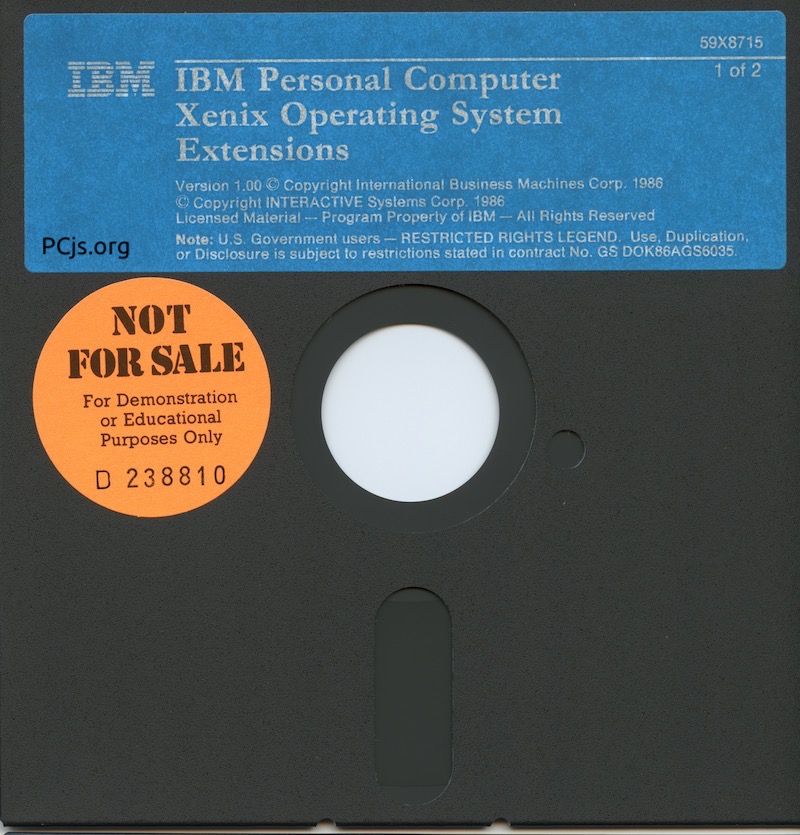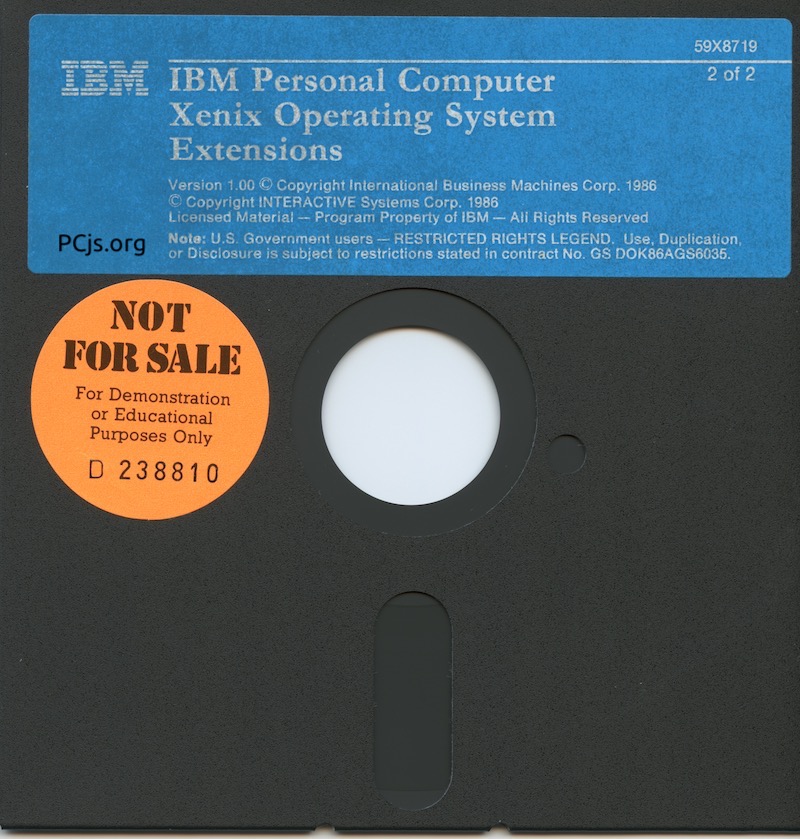PCjs Machines
Home of the original IBM PC emulator for browsers.

IBM PC XENIX 1.0
IBM PC XENIX was the first protected-mode operating system available for the IBM PC AT, and one of the first 286 operating systems. It was a multi-tasking, multi-user operating system which, unlike PC/IX on the IBM PC XT, could replace a modest UNIX workstation.
Some “Quick Start” notes that XENIX newbies (myself included) will probably find useful are provided below.
[PCjs Machine "ibm5170"]
Waiting for machine "ibm5170" to load....
Notes from The OS/2 Museum
First, you’re supposed to run
fd /etc/badtrackdirectly from the boot loader prompt on the installation diskette. To boot the kernel from floppy, runfd /xenix.fd(not justfd /xenix) from the boot loader prompt. If you manage to boot to the maintenance shell, the next step ishdinitwhich should set up the hard disk and take it from there. The system should be shut down withhaltsys. Oncehdinitis done, the system should be able to boot from the hard drive. The last step should beinstall baseonce booted from hard disk.
Related OS/2 Museum posts include:
- IBM PC XENIX (October 26, 2012)
- Forward Compatibility, Landmines (September 20, 2014)
- IBM XENIX: One Step Forward, One Step Back (March 29, 2015)
- IBM XENIX 1.0 Incompatibility Details (February 7, 2017)
- IBM XENIX: Two Steps Forward (March 16, 2017)
Here’s an excerpt from “IBM PC XENIX” (October 26, 2012):
The IBM PC XENIX was based on AT&T’s UNIX System III (rather than the newer System V) with a number of BSD enhancements. The latter included vi, C shell, and termcap/curses. Microsoft also implemented several enhancements, such as the ability to read and write DOS file systems.
Much like other Xenix variants before and after, IBM PC XENIX was optionally shipped with Text Formatting System (TFS) and Software Development System (SDS) packages. The TFS was based on the classic nroff/troff formatters and associated utilities. The SDS included a compiler, assembler, debugger, and assorted development tools like SCCS and make.
One of the Microsoft-specific enhancements was the ability to cross-compile to DOS using the SDS. The XENIX to DOS cross-development capability was likely frequently used internally at Microsoft in the mid-1980s.
The IBM PC XENIX came with rudimentary networking capabilities, namely uucp and micnet, though little is known about their specifications.

